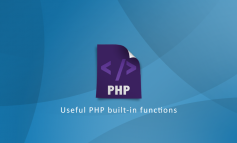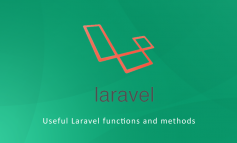A REST API is a type of API that makes it easier for developers to build and maintain APIs. These APIs are often used to create web applications, but they can also be used for mobile apps, desktop apps, and other software programs.
REST stands for Representational State Transfer. The “REST” in the acronym is just a way of saying that the API uses HTTP methods like GET or POST as verbs to represent different kinds of actions. For example, if you wanted to create a new account with an online store using the REST API, you would use the POST method to do so.
PHP is an open-source scripting language and framework primarily used to create web pages. It is one of the most popular programming languages in the world, ranking second with about 13% of all developers use it, compared to Java’s 8%.
See Also: Working with APIs in PHP
PHP API is an extension that provides PHP scripts with the ability to read and write data from sources outside of the script. This allows for third-party systems to integrate into a script without having any additional programming knowledge.
HTTP methods:
GET: Used to retrieve and search for data.
POST: Used to insert data.
PUT: Used to update data.
DELETE: Used to delete data.
Add below .htaccess file in your API folder http://localhost/api
RewriteEngine On
RewriteBase /api # if hosting api files on root use only /
RewriteCond %{REQUEST_FILENAME} !-f
RewriteRule ^(.*)$ index.php [QSA,L]
Database design and table:
database name => phpgang
table name => restAPI
column names => id, name, email, IP, date
db.sql
Database file runs in your MySQL to create a database and add data in the table.
-- -- Table structure for table `restAPI` -- CREATE TABLE `restAPI` ( `id` int(11) NOT NULL AUTO_INCREMENT, `name` varchar(240) NOT NULL, `email` varchar(240) NOT NULL, `password` varchar(240) NOT NULL, `date` timestamp NOT NULL DEFAULT CURRENT_TIMESTAMP, `ip` varchar(20) NOT NULL, PRIMARY KEY (`id`) );
Database configuration
Edit database name, user and password as per your configuration
function getConnection() {
try {
$db_username = "DATABASE_NAME";
$db_password = "********";
$conn = new PDO('mysql:host=localhost;dbname=root', $db_username, $db_password);
$conn->setAttribute(PDO::ATTR_ERRMODE, PDO::ERRMODE_EXCEPTION);
} catch(PDOException $e) {
echo 'ERROR: ' . $e->getMessage();
}
return $conn;
}
Used PDO connection you can use as per your ease and I have added this function in the same methods file you can also manage them as per your projects.
Implement API
We have created 6 API methods
- getUsers
- getUser
- findByName
- addUser
- updateUser
- deleteUser
Define HTTP routes:
$app->get('/users', 'getUsers'); // Using Get HTTP Method and process getUsers function
$app->get('/users/:id', 'getUser'); // Using Get HTTP Method and process getUser function
$app->get('/users/search/:query', 'findByName'); // Using Get HTTP Method and process findByName function
$app->post('/users', 'addUser'); // Using Post HTTP Method and process addUser function
$app->put('/users/:id', 'updateUser'); // Using Put HTTP Method and process updateUser function
$app->delete('/users/:id', 'deleteUser'); // Using Delete HTTP Method and process deleteUser function
$app->run();
These all routes call an individual function as defined above and in the last $app->run(); used to run Slim application.
let’s see functions:
1. getUsers: $app->get(‘/users’, ‘getUsers’);
function getUsers() {
$sql_query = "select `name`,`email`,`date`,`ip` FROM restAPI ORDER BY name";
try {
$dbCon = getConnection();
$stmt = $dbCon->query($sql_query);
$users = $stmt->fetchAll(PDO::FETCH_OBJ);
$dbCon = null;
echo '{"users": ' . json_encode($users) . '}';
}
catch(PDOException $e) {
echo '{"error":{"text":'. $e->getMessage() .'}}';
}
}
This function simply return all users information as you can see in this query, to call this API use this URL http://localhost/api/users this is it for your first API using get route.
2. getUser: $app->get(‘/users/:id’, ‘getUser’); In this route we are sending id.
function getUser($id) {
$sql = "SELECT `name`,`email`,`date`,`ip` FROM restAPI WHERE id=:id";
try {
$dbCon = getConnection();
$stmt = $dbCon->prepare($sql);
$stmt->bindParam("id", $id);
$stmt->execute();
$user = $stmt->fetchObject();
$dbCon = null;
echo json_encode($user);
} catch(PDOException $e) {
echo '{"error":{"text":'. $e->getMessage() .'}}';
}
}
This function checks the record of the given id and returns if found anything, to call this API use this URL http://localhost/api/users/1.
3. findByName: $app->get(‘/users/search/:query’, ‘findByName’); Route is used to search record with extra parameter and a search query with simple get method.
function findByName($query) {
$sql = "SELECT * FROM restAPI WHERE UPPER(name) LIKE :query ORDER BY name";
try {
$dbCon = getConnection();
$stmt = $dbCon->prepare($sql);
$query = "%".$query."%";
$stmt->bindParam("query", $query);
$stmt->execute();
$users = $stmt->fetchAll(PDO::FETCH_OBJ);
$dbCon = null;
echo '{"user": ' . json_encode($users) . '}';
} catch(PDOException $e) {
echo '{"error":{"text":'. $e->getMessage() .'}}';
}
}
This function search in the database for your given query, to call this API use this URL http://localhost/api/users/search/phpgang.
create PHP REST API
4. addUser: $app->post(‘/users’, ‘addUser’); API used to add new record and accept post.
function addUser() {
global $app;
$req = $app->request(); // Getting parameter with names
$paramName = $req->params('name'); // Getting parameter with names
$paramEmail = $req->params('email'); // Getting parameter with names
$sql = "INSERT INTO restAPI (`name`,`email`,`ip`) VALUES (:name, :email, :ip)";
try {
$dbCon = getConnection();
$stmt = $dbCon->prepare($sql);
$stmt->bindParam("name", $paramName);
$stmt->bindParam("email", $paramEmail);
$stmt->bindParam("ip", $_SERVER['REMOTE_ADDR']);
$stmt->execute();
$user->id = $dbCon->lastInsertId();
$dbCon = null;
echo json_encode($user);
} catch(PDOException $e) {
echo '{"error":{"text":'. $e->getMessage() .'}}';
}
}
This API accepts post requests and insert submitted data in your database as we received parameters in starting of that function. To call this API I have used cURL, you can use jQuery or any other technique.
<?php
if($_POST){
echo post_to_url("http://localhost/users", $_POST);
} else{
?>
ADD RECORD.
<form action="" method="post">
<input type="text" name="name" placeholder="Name" /><br>
<input type="text" name="email" placeholder="Email" /><br>
<input type="hidden" name="_METHOD" value="POST" />
<input type="submit" value="A D D" />
</form>
<?php
}
?>
This form will be submitted to your action file and there is a curl and that curl will post data as I have used a hidden input of _METHOD with POST value this is because some times your cURL don’t Post data to API (faced this so used this for the post as well) and Slim give us this functionality to method override and as our modern browsers do not have native support to PUT and delete so we have to use method overriding like below.
PHP RESTful API
<input type="hidden" name="_METHOD" value="POST" /> <!-- POST data --> <input type="hidden" name="_METHOD" value="PUT" /> <!-- PUT data --> <input type="hidden" name="_METHOD" value="DELETE" /> <!-- DELETE data -->
cURL function to post data:
function post_curl($_url, $_data) {
$mfields = '';
foreach($_data as $key => $val) {
$mfields .= $key . '=' . $val . '&';
}
rtrim($mfields, '&');
$pst = curl_init();
curl_setopt($pst, CURLOPT_URL, $_url);
curl_setopt($pst, CURLOPT_POST, count($_data));
curl_setopt($pst, CURLOPT_POSTFIELDS, $mfields);
curl_setopt($pst, CURLOPT_RETURNTRANSFER, 1);
$res = curl_exec($pst);
curl_close($pst);
return $res;
}
5. updateUser: $app->put(‘/users/:id’, ‘updateUser’); This route accept put HTTP method.
function updateUser($id) {
global $app;
$req = $app->request();
$paramName = $req->params('name');
$paramEmail = $req->params('email');
$sql = "UPDATE restAPI SET name=:name, email=:email WHERE id=:id";
try {
$dbCon = getConnection();
$stmt = $dbCon->prepare($sql);
$stmt->bindParam("name", $paramName);
$stmt->bindParam("email", $paramEmail);
$stmt->bindParam("id", $id);
$stmt->execute();
$status = false;
if($stmt->rowCount() > 0)
$status = true;
$dbCon = null;
echo json_encode($status);
} catch(PDOException $e) {
echo '{"error":{"text":'. $e->getMessage() .'}}';
}
}
This API function updates your data by id, to call this API we need to again use cURL and HTML form.
<?php
if($_POST){
echo post_to_url("http://localhost/users/".$_POST['id'], $_POST); // add id after last slash which you want to edit.
} else{
UPDATE RECORD.
<br>
<form action="" method="post">
<input type="text" name="id" placeholder="Id to update" /><br>
<input type="text" name="name" placeholder="Name" /><br>
<input type="text" name="email" placeholder="Email" /><br>
<input type="hidden" name="_METHOD" value="PUT" />
<input type="submit" value="U P D A T E" />
</form>
<?php
}
?>
6. deleteUser: $app->delete(‘/users/:id’, ‘deleteUser’); Route used to delete specific ID.
function deleteUser($id) {
$sql = "DELETE FROM restAPI WHERE id=:id";
try {
$dbCon = getConnection();
$stmt = $dbCon->prepare($sql);
$stmt->bindParam("id", $id);
$stmt->execute();
$status = false;
if($stmt->rowCount() > 0)
$status = true;
$dbCon = null;
echo json_encode($status);
} catch(PDOException $e) {
echo '{"error":{"text":'. $e->getMessage() .'}}';
}
}
This API function accepts HTTP delete request and to send HTTP delete method we have to used method overriding using our hidden field named _METHOD and the value will be DELETE form and cURL code given below.
<?php
if($_POST){
echo post_to_url("http://localhost/users/".$_POST['id'], $_POST);
} else{
?>
DELETE RECORD.
<br>
<form action="" method="post">
<input type="text" name="id" placeholder="Id to delete" /><br>
<input type="hidden" name="_METHOD" value="DELETE" />
<input type="submit" value="D E L E T E" />
</form>
<?php
}
?>
That’s all for one of the biggest tutorials for RESTful API, I hope you like this tutorial, and please don’t forget to give us your feedback and any issue you have faced in this tutorial please do comment we try our level best to solve your problems.




2 Comments
yudi
August 8, 2021 at 3:45 pmI download and try..it error 404 Page Not Found
Huzoor Bux
August 11, 2021 at 7:12 amplease check .htaccess available in your directory.